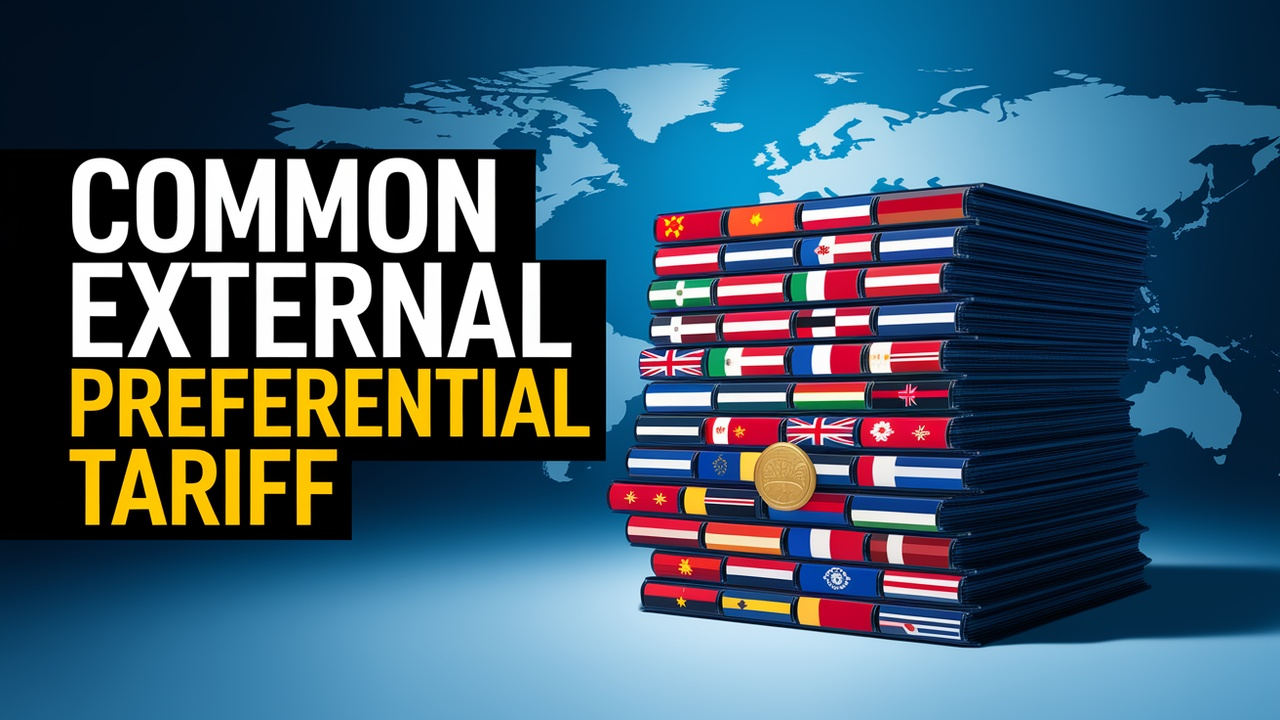CEPT Full Form - Common External Preferential Tariff
by Shashi Gaherwar
0 2023
Common External Preferential Tariff: Understanding its Role in Global Trade and Regional Integration
In international trade, tariffs often hinder the free flow of goods and services. The Common External Preferential Tariff (CEPT) has emerged within regional trade agreements (RTAs) to reduce trade barriers and promote economic integration among member states, notably in blocs like ASEAN, SADC, and ECOWAS.

This article explores the Common External Preferential Tariff, its role in global trade, benefits for member countries, and impact on international economic cooperation.
What is a Common External Preferential Tariff?
A Common External Preferential Tariff (CEPT) is a tariff system used by regional trade agreement members, applying a common external tariff (CET) on imports from non-member countries. Member states grant each other preferential treatment, such as lower or no tariffs, for intra-bloc trade.
This ensures a unified tariff structure for external imports, preventing unilateral tariff reductions that could undermine the trade bloc’s objectives, while fostering intra-bloc trade.
Purpose and Objectives of the Common External Preferential Tariff
The CEPT aims to promote regional integration through a unified market, with key objectives:
- Promoting Economic Integration: Harmonizes tariffs to create a level playing field, encouraging cross-border trade.
- Protecting Domestic Industries: Shields local industries from external competition with common tariffs.
- Increasing Bargaining Power: Strengthens the bloc’s leverage in global trade negotiations.
- Encouraging Investment and Economic Growth: Attracts investment by reducing barriers and fostering economic stability.
How Does the Common External Preferential Tariff Work?
The CEPT operates through a structured process:
- Establishing a Common External Tariff: Members agree on a unified tariff for non-member imports, ensuring consistency.
- Granting Preferential Treatment: Reduces or eliminates tariffs on intra-bloc trade, enhancing regional supply chains.
- Monitoring and Adjusting: Periodically reviews and updates the tariff system to adapt to global trade changes.
Examples of Regional Trade Agreements Using CEPT
Several trade blocs utilize the CEPT:
- ASEAN Free Trade Area (AFTA): Established in 1992, applies CEPT to reduce intra-ASEAN tariffs and unify external tariffs.
- Southern African Development Community (SADC): Uses CEPT to promote integration and protect industries among 16 members.
- Economic Community of West African States (ECOWAS): Employs CEPT to enhance cooperation and create a single market in West Africa.
Benefits and Challenges of the Common External Preferential Tariff
The CEPT boosts regional trade, cooperation, and global bargaining power but faces challenges like trade imbalances, complex tariff negotiations, and short-term industry disruptions.
The Common External Preferential Tariff is a vital tool for regional integration, enhancing trade relations and protecting domestic industries. By harmonizing tariffs and promoting intra-bloc trade, it fosters cooperation, market access, and investment. Despite challenges, CEPT shapes global trade and drives economic growth in regional markets, playing a growing role in the evolving economic landscape.
Further Learning Resources
If you’re passionate about building a successful blogging website, check out this helpful guide at Coding Tag – How to Start a Successful Blog. It offers practical steps and expert tips to kickstart your blogging journey!
For dedicated UPSC exam preparation, we highly recommend visiting www.iasmania.com. It offers well-structured resources, current affairs, and subject-wise notes tailored specifically for aspirants. Start your journey today!

Share:








Comments
Waiting for your comments